Looking for a tropical escape that’s off the beaten path? Let me introduce you to two mesmerizing island destinations: Bermuda and Turks and Caicos.
These gems offer distinct experiences, from Bermuda’s British colonial charm to Turks and Caicos’ fusion of cultural influences. Bermuda boasts rocky coastlines, lush hills, and famous pink-sand beaches, while Turks and Caicos entices with its flat, sandy islands and powdery white shores.
LocationNorth Atlantic OceanCaribbean Sea
GeographyConsists of one main islandConsists of multiple islands
LanguageEnglishEnglish
GovernmentBritish Overseas TerritoryBritish Overseas Territory
CurrencyBermudian Dollar (BMD)United States Dollar (USD)
TourismPopular tourist destinationPopular tourist destination
EconomyStrong financial services sector, tourism, international businessTourism, offshore financial services, fishing
CultureBritish and Afro-Caribbean influencesAfro-Caribbean influences
AttractionsCrystal Cave, Horseshoe Bay Beach, Royal Naval DockyardGrace Bay Beach, Chalk Sound National Park, Middle Caicos Caves
ClimateSubtropical climate, mild winters, warm summersTropical marine climate, warm temperatures year-round
Whether you’re an adventurous water enthusiast or a seeker of serene beauty, both islands have you covered. So pack your swimsuit and get ready for an unforgettable island adventure in Bermuda and Turks and Caicos!
History

When you trace the historical tapestry of both Bermuda and Turks and Caicos, you’ll find intricate stories that have shaped their present identities. After being discovered by the Spanish adventurer Juan de Bermudez in 1505, the English colonized Bermuda in 1609. Its colonial history is still evident in its distinctive British flair, from architecture to traditions.
Turks and Caicos, on the other hand, have a distinct historical trajectory. First inhabited by the Taino and Lucayan tribes, it later became a target for Spanish conquistadors. The islands fell under several colonial rules – French, British, and Spanish – before finally becoming a British Overseas Territory. The colonial imprint here is mixed, leading to a unique cultural blend.
While Bermuda’s history has been marked by its strategic location and its use as a naval base, Turks and Caicos’ history is tied strongly to its salt industry. In Bermuda, you can visit the Royal Naval Dockyard, while in Turks and Caicos, you can explore the remnants of its salt pans and old plantation houses.
In essence, both islands provide a rich history to explore, with Bermuda offering a distinctly British colonial experience and Turks and Caicos presenting a unique mix of influences.
Geographical Features
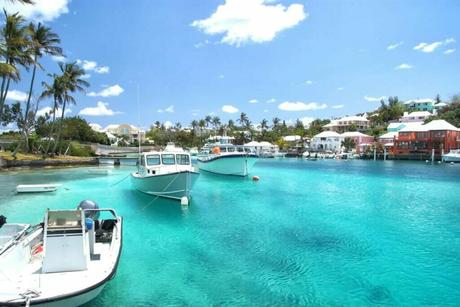
The geographical makeup of Bermuda and Turks and Caicos is one of the key distinguishing factors between them. In the North Atlantic Ocean, Bermuda is a solitary island group distinguished by a rocky shoreline and a steep, forested interior. This island chain is actually the tops of ancient undersea volcanoes, giving it an intriguingly rugged appeal.
40 low-lying coral islands make up the archipelago of Turks and Caicos, which is located in the Caribbean Sea. Its landscape is relatively flat and arid, characterized by mangroves, salt pans, and pristine sandy beaches. The third-largest coral reef system in the world is located in the islands.
When you explore Bermuda, you’ll encounter vibrant pastel houses perched on hillsides and winding roads ensconced by lush greenery. On Turks and Caicos, you’ll traverse sandy trails, stroll along white sand beaches, and gaze upon turquoise waters.
Although the two destinations differ in their geographical features, both offer stunning views and unique landscapes to explore. The contrast between Bermuda’s hillier and rockier terrain and Turks and Caicos’ flat and sandy islands provides travelers with a diverse choice of experiences.
Beaches
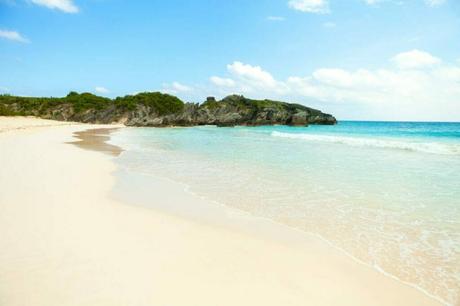
Beaches are often the highlight of any island getaway, and in this respect, both Bermuda and Turks and Caicos hold their own allure. Bermuda’s beaches are famous for their unique pink sand, a result of crushed coral and shells. The island’s most popular beaches include Horseshoe Bay Beach and Elbow Beach, both celebrated for their warm, clear waters and stunning shoreline.
Turks and Caicos, however, are renowned for their powdery white sand beaches that stretch for miles. The tranquil, crystal-clear waters at Grace Bay Beach make it one of the top beaches in the world for swimming and snorkeling.
While Bermuda’s smaller, secluded coves offer a sense of tranquility and privacy, Turks and Caicos’ expansive beaches provide ample space for sunbathing and beach games. Each area has a beach that is clean, well-kept, and breathtakingly beautiful, providing tourists with a distinctive beach experience.
Visitors to Bermuda can enjoy a beach day against the backdrop of rocky cliffs, while those visiting Turks and Caicos can unwind on vast stretches of sandy coastline. It’s a contrast of intimacy versus expansiveness, of pink sands versus white.
Water Activities
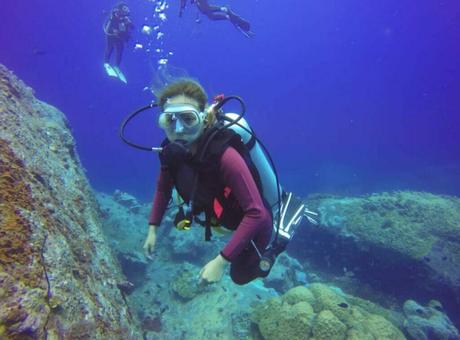
Bermuda and Turks and Caicos are prime destinations for water activities, although the experiences they offer vary. Bermuda’s surrounding coral reefs make it an excellent place for snorkeling and scuba diving. The island is also known for sailing and fishing, thanks to its rich marine life and azure waters.
Turks and Caicos, with its extensive coral system and clear visibility underwater, is also a diver’s paradise. The islands are popular for wall diving, where divers can explore the vertical coral walls that drop dramatically into the deep. Additionally, the calm, shallow waters make it ideal for paddleboarding and kayaking.
Both locations offer a variety of boat tours, from luxury yacht charters to guided fishing trips. If you’re into water sports, Bermuda’s vibrant sailing scene may appeal to you, whereas Turks and Caicos’ tranquil waters may be perfect for a more laid-back paddleboarding experience.
In short, while both islands provide plenty of water activities, Bermuda leans more towards the adventurous side, and Turks and Caicos offers a tranquil water experience.
Scenic Beauty
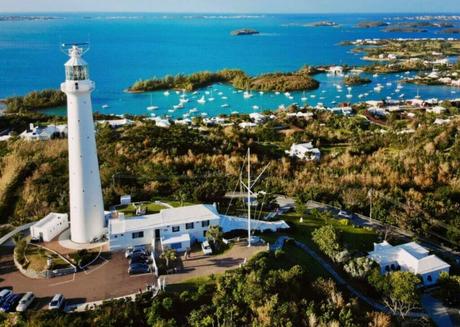
The scenic beauty of Bermuda and Turks and Caicos is undeniable, though they offer different kinds of picturesque views. Bermuda’s beauty lies in its charming townscapes with pastel-colored buildings, beautiful moongates, lush gardens, and azure sea vistas. The Gibbs Hill Lighthouse offers panoramic views of the entire island.
Conversely, Turks and Caicos captivate visitors with its endless horizon of turquoise waters, pristine white beaches, and unspoiled nature. The view from Mudjin Harbor is particularly breathtaking, where cliffs meet the beach and the Atlantic waves crash against limestone rocks.
Both islands have nature reserves and national parks where you can witness a variety of endemic flora and fauna. Bermuda’s Spittal Pond Nature Reserve and Turks and Caicos’ Chalk Sound National Park are must-visit locations for nature enthusiasts.
In essence, while Bermuda offers a more cultivated scenic beauty with its charming towns and gardens, Turks and Caicos provide raw, untouched beauty in the form of its beaches and nature reserves.
Cultural Experience
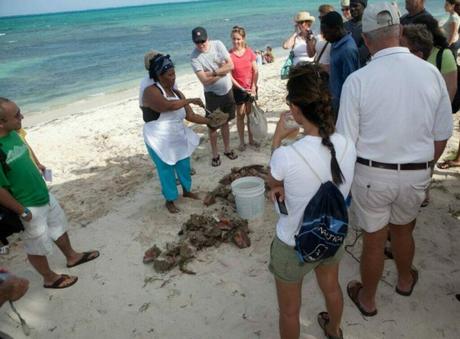
The cultural experiences in Bermuda and Turks and Caicos are reflections of their respective histories. Bermuda’s cultural scene is heavily influenced by British traditions. You can experience afternoon tea sessions, cricket matches, and traditional Gombey dances that blend African, Native American, and British influences.
On the other side, the culture of Turks and Caicos is a synthesis of African, American, and European elements. Here, you can enjoy Junkanoo, a lively street parade with music, dance, and costumes. You can also indulge in the island’s seafood-based cuisine, with conch being a local delicacy.
Bermuda celebrates its cultural heritage through various festivals, such as the Bermuda Day Parade and the Cup Match Summer Splash. In Turks and Caicos, cultural traditions come alive during events like the Conch Festival and the Turks and Caicos Music and Cultural Festival.
In terms of cultural experiences, both Bermuda and Turks and Caicos offer vibrant and unique local cultures shaped by their rich histories. Whether you want to immerse yourself in British colonial culture or enjoy a blend of diverse influences, you’ll find it on these islands.
Accessibility

Regarding accessibility, both Bermuda and Turks and Caicos have their unique considerations. Bermuda, being further north in the Atlantic, has regular flights from the US East Coast, Canada, and the UK. It’s also a popular destination for cruise ships. However, there’s no public ferry service between the islands, so internal travel primarily involves buses, taxis, or rented motorbikes.
Turks and Caicos, closer to the US mainland, are also easily accessible by flights from several North American cities. You can freely explore the various islands thanks to the ability to travel between them using aircraft and ferries.
Both locations drive on the left, so if you’re renting a vehicle, keep that in mind. Bermuda’s visa requirements are straightforward for US, UK, and Canadian visitors, but Turks and Caicos offer a slightly longer visa-free stay for these nationalities.
In summary, both Bermuda and Turks and Caicos are relatively accessible for North American and European travelers. You might find one more practical than the other depending on your preferred modes of transportation. But whichever option you choose, you’re going to have a memorable time.
FAQ
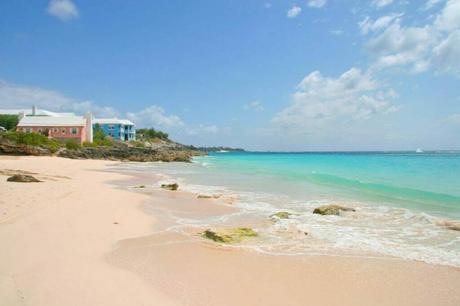
Is Turks and Caicos part of Bermuda?
No, Turks and Caicos is not part of Bermuda. They are separate island destinations located in the Atlantic Ocean and Caribbean Sea, respectively. While they may share some similarities in terms of geography and natural beauty, each territory has its own distinct identity and government.
Which is better, Bermuda or Turks and Caicos?
The “better” choice between Bermuda and Turks and Caicos ultimately depends on individual preferences. Both destinations offer unique experiences and attractions. Bermuda showcases a British colonial charm, distinctive pink-sand beaches, and hilly terrains, while Turks and Caicos boasts flat, sandy islands, powdery white beaches, and a fusion of cultural influences. Whether you prefer a British colonial experience or tranquil turquoise waters, both islands have their own allure.
What country does Turks and Caicos belong to?
Turks and Caicos is a British Overseas Territory. It is governed by and protected by the United Kingdom. While the islands have their own local government, the ultimate authority rests with the British government. This status grants Turks and Caicos the benefits and privileges of being affiliated with the United Kingdom while maintaining a unique cultural identity.

